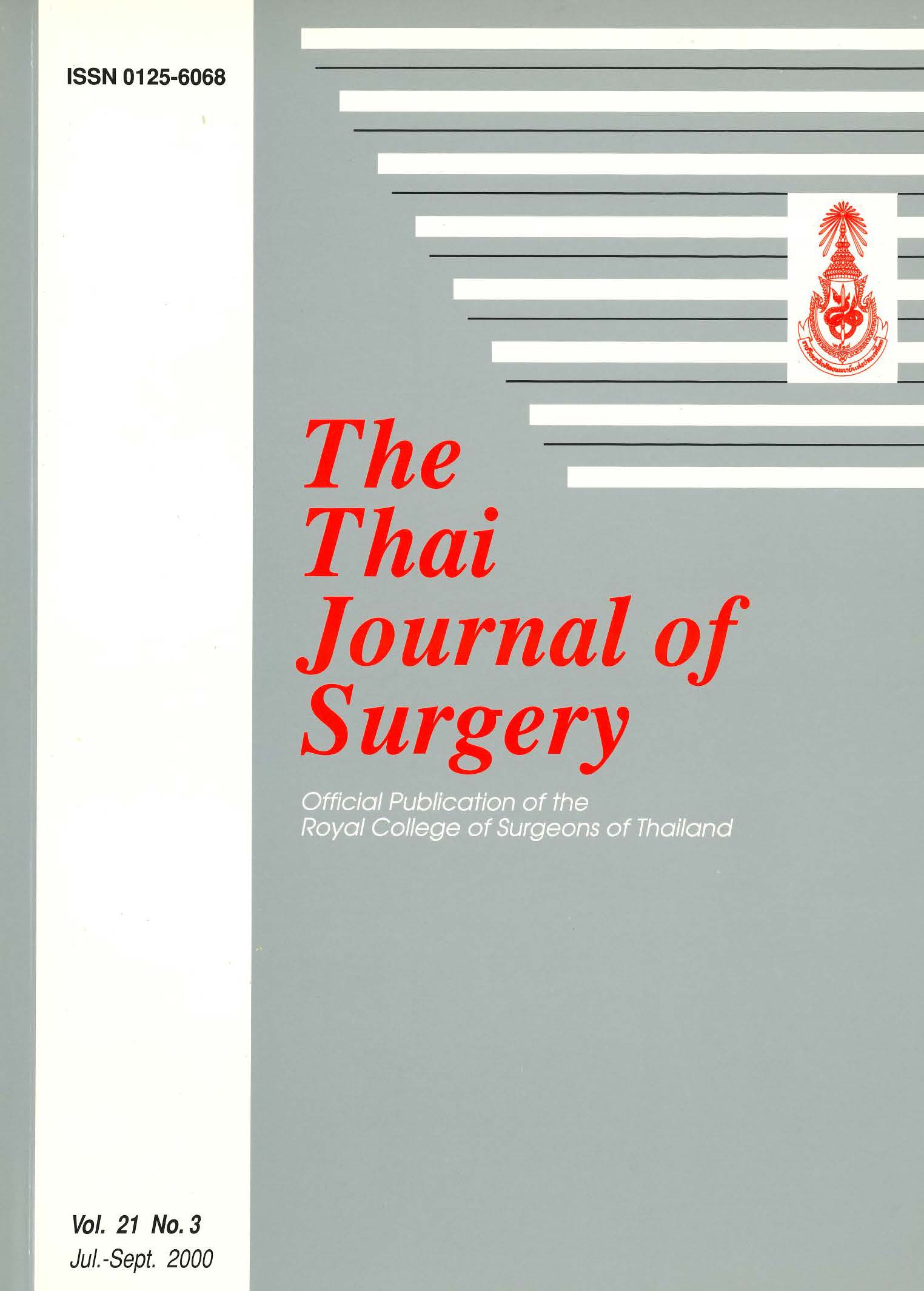Comparative Study of Laparoscopic and Open Insertion of Peritoneal Dialysis Catheter
Keywords:
Continuous ambulatory peritoneal dialysis (CAPD), Laparoscopy, Renal failure, Tenckhoff catheterAbstract
Background: Laparoscopic insertion of Tenckhoff catheters has gained wider acceptance and is performed in many centres. This paper compares the immediate as well as the long-term results of catheters inserted by open and laparoscopic technique.
Methods: The operative techniques were described. Retrospective case notes audit of all patients who had peritoneal dialysis catheter inserted at The Queen Elizabeth Hospital during the last 10 years was performed to compare the operative morbidity and long term complications.
Results: Eight-two Tenckhoff catheters were placed in 77 patients. Forty-one catheters were inserted in 37 patients with open technique and 41 catheters in 40 patients with laparoscopic technique. Mean follow up period was 536 days in laparoscopic group and 777 days in open group. The patients in laparoscopic group had shorter operative time (38 min vs. 48 min), less postoperative narcotic requirement (2.6 mg. vs. 17 mg. of morphine or equivalent), earlier resumption of regular diet (1 day vs. 2.8 days) and shorter post operative hospital stay (3.6 days vs. 8.2 days). With laparoscopic technique, there was 10 per cent incidence of obstruction and 7.5 per cent incidence of leakage (5.2% and 2.6% respectively in open group). In the long-term follow up, the catheter survival was comparable in both groups.
Conclusion: Laparoscopic technique provides advantages over open technique in reducing post operative pain, hastening post operative recovery and shortening the hospital stay. The benefits of laparoscopic technique are in the immediate postoperative period.
References
2. Crabtree JH, Fishman A. Laparoscopic epiplopexy of the greater omentum and epiploic appendices in the salvaging of dysfunctional pertioneal dialysis catheters. Surg Laparosc Endosc 1996; 6(3): 176-80.
3. Cooper R, Liszewski R, Kasama R. Applications for laparoscopy in nephrology practice. Dial Transplant 1999;28: 138-40, 157.
4. Draganic B, James A, Booth M, Gani JS. Comparative experience of a simple technique for laparoscopic chronic ambulatory peritoneal dialysis catheter placement. Aust NZ J Surg 1998; 68: 735-9.
5. Watson DI, Paterson D, Bannister K. Secure placement of peritoneal dialysis catheters using a laparoscopic technique. Surg Laparosc Endosc 1996; 6: 35-7.
6. Wang JY, Hsieh JS, Chen FM, Chuan CH, Chan HM, Huang TJ. Secure placement of continuous ambulatory peritoneal dialysis catheter under laparoscopic assistance. Am Surg 1999;65:247-9.
7. Wright M, Bel'eed K, Johnson B, Eadington D, Sellars L, Farr MJ. Randomized prospective comparison of laparoscopic and open peritoneal dialysis catheter insertion. Perit Dial Int 1999;19:372-5.
8. Pastan S, Gassensmith C, Manatunga AK, Copley JB, Smith EJ, Hamburger RJ. Prospective comparison of peritoneoscopic and surgical implantation of CAPD catheters. ASAIO Trans 1991; 37: M154-6.
9. Amerling R, Cruz C. A new laparoscopic method for implantation of peritoneal catheters. ASAIO J 1993; 39: M787-9.
10. Stephen RA. Have new materials, shapes, and designs of peritoneal dialysis catheters improved their function? Semin Dial 1999; 12: 148-53.
11. Simkin EP, Wright FK. Perforating injuries of the bowel complicating peritoneal catheter insertion, Lancet 1968; 7533:64-7.
12. Devine S, Oreopoulos DG, Izatt S, et al. The permanent Tenckhoff catheter for chronic peritoneal dialysis. Can Med Assoc J 1975;113: 219-21.
13. Gadallah MF, Pervez A, Mohamed A, et al. Peritoneoscopic versus surgical placement of peritoneal dialysis catheters: A prospective randomized study on outcome. Am J Kidney Dis 1999; 33: 118-22.
14. Brownlee J, Elkhairi S. Laparoscopic assisted placement of peritoneal dialysis catheter: a preliminary experience. Clin Nephron 1997; 47: 122-4.
15. Kimmelstiel FM, Miller RE, Molinelli BM, Lorch JA, Laparoscopic management of peritoneal dialysis catheters. Surg Gynecol Obstet 1993; 175: 565-70.
16. Fleisher AG, Kimmelstiel FM, Lattes CG, Miller RE. Surgical complications of peritoneal dialysis catheters. Am J Surg 1985;149: 726-9.
17. Spence PA, Mathews RE, Khanna R, Oreopoulos DG. Improved results with a paramedian technique for the insertion of peritoneal dialysis catheters. Surg Gynecol Obstet 1985;161:585-7.
Downloads
Published
How to Cite
Issue
Section
License
Articles must be contributed solely to The Thai Journal of Surgery and when published become the property of the Royal College of Surgeons of Thailand. The Royal College of Surgeons of Thailand reserves copyright on all published materials and such materials may not be reproduced in any form without the written permission.



